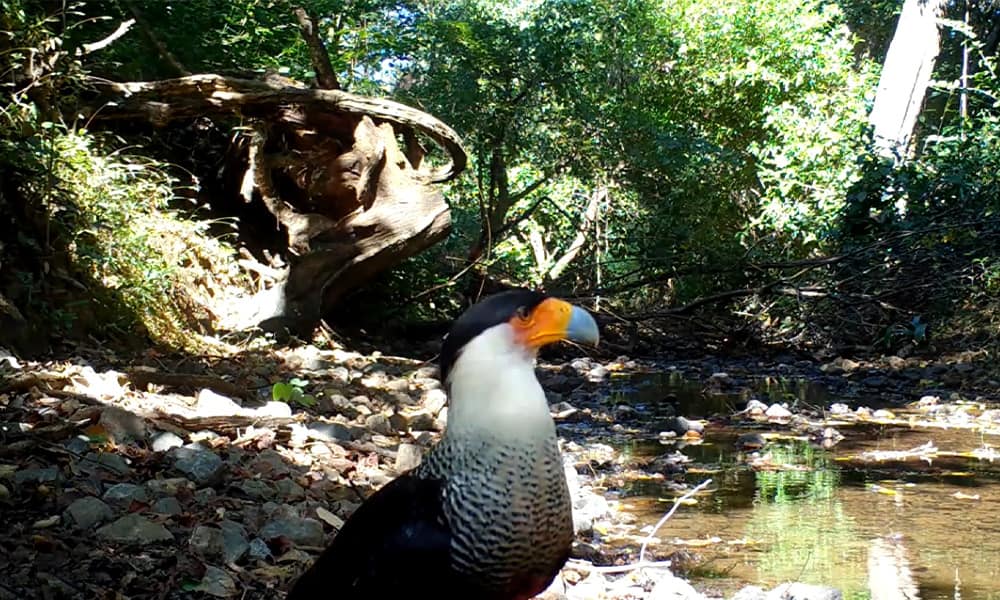What looks like a hawk, eats like a vulture but is most closely related to falcons? Meet the crested caracara.
The crested caracara (Caracara cheriway) looks like a sturdy hawk. The top of its head is black, contrasting with its white neck. The pure white neck starts to get black stripes as you reach the chest and the rest of the body is black. What stands out are its yellow legs and bright reddish-orange face that ends in a white beak.
While it will hunt small animals, most of its diet consists of the same thing Costa Rica’s vultures eat – dead stuff. You can find them patrolling the side of the road to scoop up whatever creature didn’t time their road-crossing properly. They’re also commonly seen in freshly mowed fields, happily gobbling up the animals that got chopped up along with the grass.
Their Spanish names hint at their carrion-filled diet. One, caracara cargahuesos or simply cargahuesos, translates to bone carrier, which is something you can commonly see them doing. Another common name is quebrantahuesos, which translates to bone breaker. They’ve earned this moniker from their taste for bone marrow, that nutritional goop that’s hidden inside of bones. They’re known to pick up a bone, fly up to a good height and drop the bone down onto a hard surface which cracks it open, giving them an opportunity to use their powerful beak to reach the hidden prize.
Crested caracaras have a range over much of Costa Rica, except for high altitudes and the Caribbean coast. They are quite common in Guanacaste so I see them frequently while I’m out checking camera traps. Since they happily munch on roadkill, I also frequently see them on family road trips where I’ll say “Look, a caracara!” but nobody cares because, like I said, they’re quite common and I think I point out birds too frequently.
Another way to spot a crested caracara, especially during mating season, is to listen for a harsh, cackling ker-ker-ker-ker-kerrr sound. It’s obviously difficult to explain in an article, but the audio is unmistakable. It sounds like too big of a noise to be coming out of a bird. If you track the noise to the source, you’ll see a crested caracara up in the branches belting out its song while throwing its head backwards far enough that it looks like it’s in danger of snapping off.
I record crested caracaras frequently in my Guanacaste camera trap projects, especially if I place the camera near something dead or at a water source where they enjoy bathing. Check out the video below and meet the crested caracara.
About The Author
Vincent Losasso, founder of Guanacaste Wildlife Monitoring, is a biologist who works with camera traps throughout Costa Rica. Learn more about his projects at: Instagram and facebook or by email.






